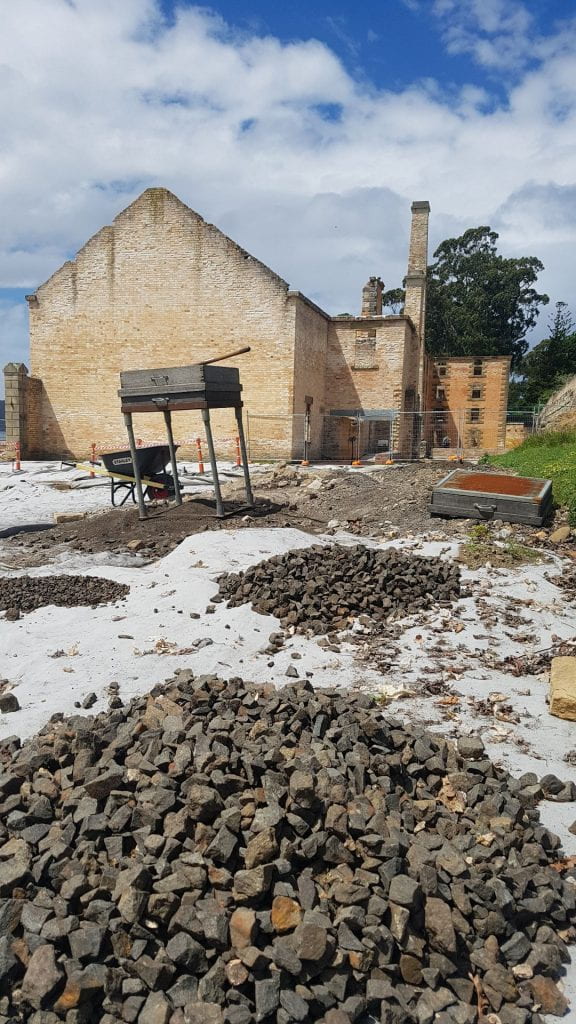A recent question from avid reader Johnathon got me thinking about dolerite. This iron-hard stone is a familiar sight in Tasmania – particularly the south-east where its columnar formations fringe much of the coastline. Dolerite formed about 200 million years ago as a major magma intrusion into overlying sedimentary mudstones and sandstones, which is why at a number of places across the Tasman Peninsula you will see dolerite stone sitting adjacent to bands of sedimentary stone. The large harbour on which Port Arthur sits is fringed with dolerite, much of it worn down to boulders. When the convicts first turned up at Mason Cove in September 1830 they found a landscape that had not changed in 6,500 years: dolerite boulders lining the shores of a bay, at the head of which was a sandy beach and stream of fresh water.
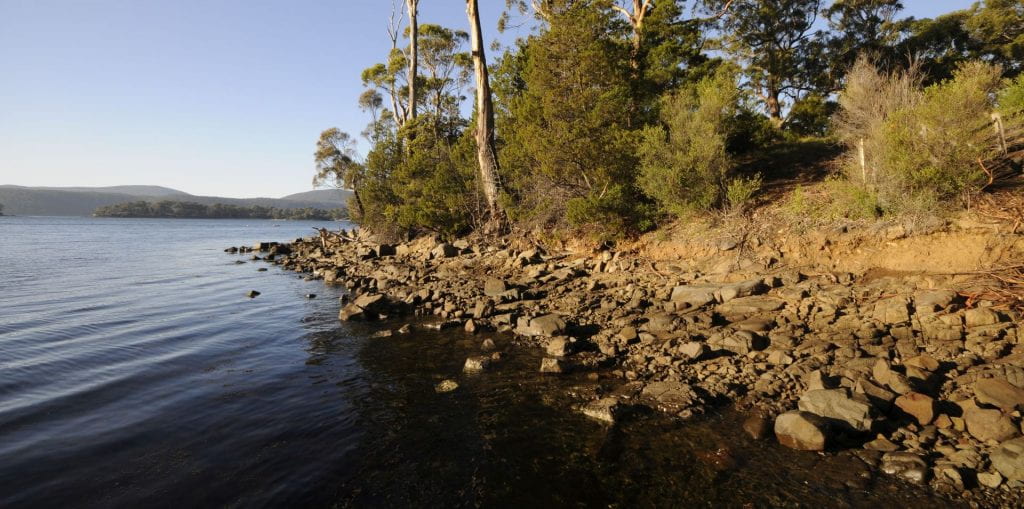
Much of the original shoreline of Mason Cove was obscured during the convict period. This small section remains
When you visit the historic site today, it is possible to tell many of the early 1830s structures by their use of dolerite fieldstone. Rounded and well-weathered, these stones would have been collected as the bush was cleared to make way for the buildings and cultivation fields. As the settlement developed, the convicts began to quarry the stone, cutting and prying it out to make way for the waterfront commissariat, workshops and – eventually – the 1842 flour mill and granary. This latter building used dolerite in its foundations, providing a layer that could withstand the bay’s tidal action and prevent problems from damp.
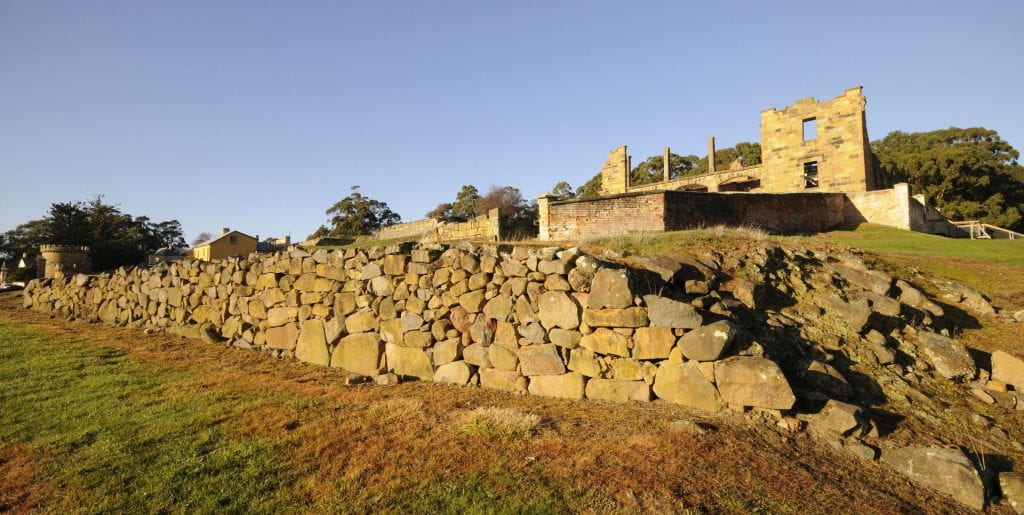
This dolerite retaining wall was built from fieldstone and marks the former location of a building built in 1833
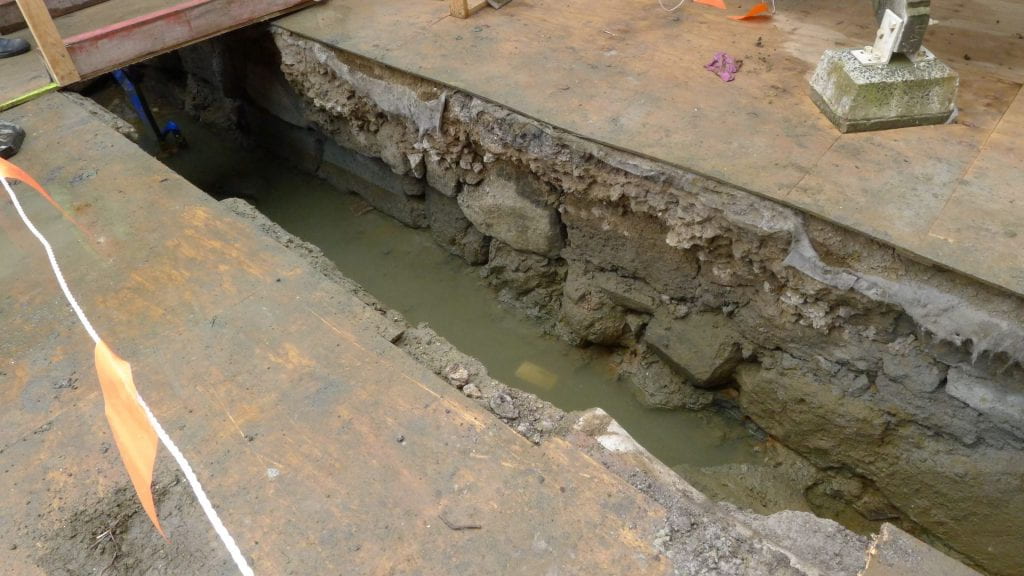
During excavations of the Penitentiary in 2013-15 the dolerite footings of the former treadwheel ward/mill house were found
A useful aid to construction, dolerite also provided a useful form of punishment. Convicts who committed further offences at Port Arthur could find themselves detailed to the stone-breaking gang. Chained up, these men would be provided with a breaking hammer and a big lump of dolerite and then told to break the big lump into smaller lumps. Up until the 1850s the men worked in a purpose-built shelter on the waterfront, near the workshops. Martin Cash, a prisoner at Port Arthur, later recalled:
It was a long passage divided into compartments by a brick wall about four feet high with benches in front, on which the stones were placed, each man having to work in a standing position while chained to a ring set in the wall
A visitor to Port Arthur in 1842, David Burn, recalled that the men considered the work to be
most intolerably galling
From 1854 the stone-breaking shed was relocated to the southern side of the bay (where the Memorial Garden is today). Work had commenced on a new quarry in this area, the stones from which were used as part of the fill when half of Mason Cove was reclaimed between 1854-56. Newly-arrived convicts, having spent a period of time in the Separate Prison, would be placed in the quarry gang for at least six months, before moving to lighter labour.
The broken dolerite was used for a number of purposes around the settlement: providing ‘metal’ for roads and yards, as well as used for construction. During the excavation of the Penitentiary the separate cells were found to have been constructed on a thick pad of broken dolerite calculated to be over 12,000 cubic feet in size. Excavation of the Penitentiary ablutions area found hundreds of cubic feet of stone used to surface the yards. During the current excavation of the workshops, we are finding similar amounts of broken dolerite used to surface the Mechanics’ Yard.
We have some idea about the labour that was required to break these stones. Work returns from the 1840s indicate that convicts were required to break up to 16 cubic feet (just under a tonne) of dolerite per day. Using this figure we can begin to understand the sheer effort that went into seemingly simply things like surfaces or foundations. At this rate, it would have taken a single prisoner 750 days to break all the stone required for the foundations of the Penitentiary’s cells!
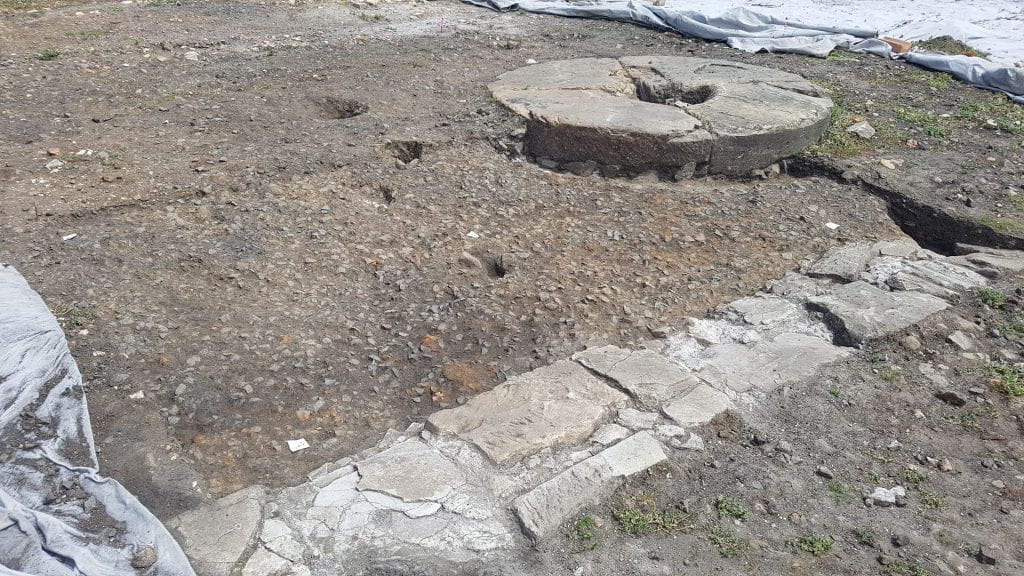
The ‘Mechanics’ Yard’ of the workshops is surfaced with at least two distinct layers of broken dolerite
So, next time you see a bit of dolerite, perhaps pay it your respects. Thrown up from the bowels of the earth, this relatively unimpressive stone has an important place in history, along the way undoubtedly causing many a prisoner to curse the day they were handed a stone hammer…

